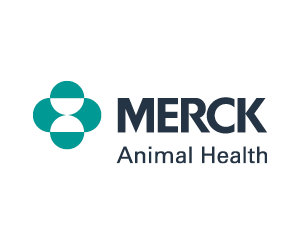Suggested monitoring protocols
For specific monitoring recommendations based on blood glucose nadirs, see the algorithm for monitoring blood glucose levels in dogs and cats.
----------------------------------------------------------------------------------------------------------------------------------
Monitoring on the initial day of treatment
- Initiate insulin therapy.
- Measure fructosamine.
- Perform a BGC to ensure that hypoglycemia does not occur.
- If BG is <150 mg/dL at any time:
- Decrease dose by 10–50% in dogs.
- Decrease dose by 0.5 U in cats.
- In both species, re-curve the next day and daily thereafter until a nadir >150 mg/dL is reached.
- If BG is >150 mg/dL, discharge the patient and re-evaluate in 7–14 days (sooner if concerns for hypoglycemia arise). The insulin dose should not be increased on day 1 no matter how high BG may be.
----------------------------------------------------------------------------------------------------------------------------------
Monitoring until control is attained
- In a new diabetic, have owner administer insulin in hospital to observe technique.
- BGC will need to be performed q 7–14 days until acceptable dose is found.
- Review owner log.
- Perform a physical examination, including measurement of body weight.
- Perform a BGC and measure fructosamine.
----------------------------------------------------------------------------------------------------------------------------------
Ongoing monitoring
- Review owner log.
- Perform a physical examination, including measurement of bodyweight.
- Perform a BGC and measure fructosamine.
- Semiannually, perform full laboratory work including urinalysis, urine culture, triglycerides, thyroid levels (cats), and BP.
- Any time an insulin dose is changed, a BGC should be performed in 7–14 days.
- Utilizing “spot checks” or isolated BG values by themselves is not recommended as a sole reason to increase an insulin dose, but can sometimes be used to decrease the dose (if verified).
----------------------------------------------------------------------------------------------------------------------------------
Ongoing home monitoring
- Log food and water intake and appetite daily.
- Log insulin doses daily.
- Note any signs suggestive of hypoglycemia; contact veterinarian if persistent.
- Periodically test urine; record glucose level and ketones. If ketones are present, contact veterinarian.
----------------------------------------------------------------------------------------------------------------------------------
Treatment adjustments based on nadirs
Insulin adjustments if the nadir is <80 mg/dL
- If clinical signs of hypoglycemia are present, treat as necessary.
- Once the BG becomes >250 mg/dL, reinitiate therapy.
- Decrease the dose 10–25% in dogs depending on the BG level and if there are no clinical signs of hypoglycemia.
- Decrease the dose 50% in dogs if there are clinical signs of hypoglycemia.
- Decrease the dose 0.5–1 U in cats depending on BG and if there are clinical signs of hypoglycemia.
- A BGC should be obtained after the next dose to ensure hypoglycemia does not recur. If hypoglycemia recurs with the lower dose, continue to decrease dose and obtain a BGC until hypoglycemia is not seen. Obtain a BGC in 7–14 days.
- If BG never returns to >250 mg/dL, consider remission, especially in cats. Monitor for hyperglycemia recurrence, in which case reinitiate insulin therapy as for new patient.
Insulin adjustments if the nadir is >150 mg/dL
- If clinical signs are present:
- Increase the dose 10–25% in dogs depending on the size of the patient and the degree of hyperglycemia.
- Increase the dose 0.5–1 U in cats depending on the size of the patient and the degree of hyperglycemia.
- If giving insulin once daily, consider q 12 hr therapy.
- If clinical signs are not reported:
- Consider stress hyperglycemia OR placebo effect.
- If weight is stable, leave dose unchanged and recheck in 1–3 mo.
- If weight is decreasing, consider dose increase and recheck in 14 days.
- Consider the presence of insulin resistance if:
- In dogs, insulin dose >1 U/kg/dose with no response or >1.5 U/kg fails to bring BG below 300 mg/dL.
- In cats, insulin dose >5 U/dose.
Insulin adjustments if the nadir is 80–150 mg/dL
- If clinical signs are controlled, no adjustment needed.
- If clinical signs are not controlled, do not adjust the insulin dose. Consider the following possibilities:
- BGC is not reflective of overall control; BGC varies day to day.
- There is inappropriate insulin duration of action. If giving insulin once a day, consider q 12 hr therapy. If giving q 12 hr, may need to consider changing insulin.
- There is overlap of insulin action. If BG is still decreasing at end of day, the subsequent dose may cause hypoglycemia. May need to give a lower dose in the evening.
- Presence of another disease is causing the clinical signs.





